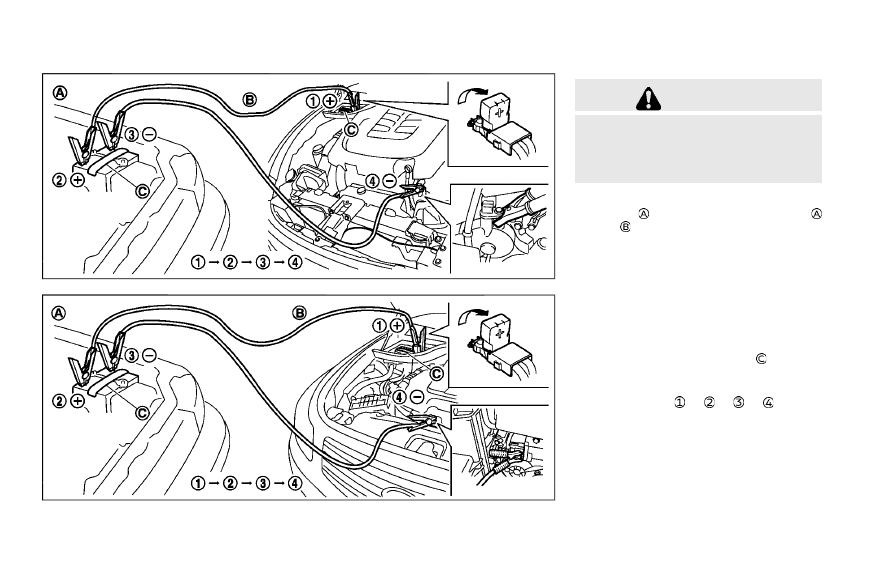Infiniti Q70 (2019 year). Instruction - part 22

6-10
In case of emergency
SCE0886
VK56VD engine
SCE0884
VQ37VHR engine
WARNING
Always follow the instructions below.
Failure to do so could result in damage to
the charging system and cause personal
injury.
1. If the booster battery is in another
vehicle
, position the two vehicles (
and
) to bring their batteries into close
proximity to each other.
Do not allow the two vehicles to touch.
2. Apply parking brake. Move the shift lever
to the P (Park) position. Switch off all
unnecessary electrical systems (light,
heater, air conditioner, etc.).
3. Remove vent caps on the battery (if so
equipped). Cover the battery with a
firmly wrung out moist cloth
to reduce
explosion hazard.
4. Connect jumper cables in the sequence
as illustrated (
?
?
? ).
For models with a steering wheel lock
mechanism: If the battery is discon-
nected or discharged, the steering wheel
will lock and cannot be turned. Supply
power using jumper cables before push-
ing the ignition switch and disengaging
the steering lock.